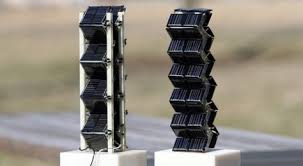
Breaking News
 FDA Chief Says No Solid Evidence Supporting Hepatitis B Vaccine At Birth
FDA Chief Says No Solid Evidence Supporting Hepatitis B Vaccine At Birth
Evergreen, Colorado: Another Killing Zone in America
 Trump Cryptically Writes "Here We Go!" In Reaction To Russia-Poland Drone Incident, Oil Sp
Trump Cryptically Writes "Here We Go!" In Reaction To Russia-Poland Drone Incident, Oil Sp
 Qatar Says It Reserves Right To Retaliate Against 'Barbaric' Netanyahu
Qatar Says It Reserves Right To Retaliate Against 'Barbaric' Netanyahu
Top Tech News
 Methylene chloride (CH2Cl?) and acetone (C?H?O) create a powerful paint remover...
Methylene chloride (CH2Cl?) and acetone (C?H?O) create a powerful paint remover...
 Engineer Builds His Own X-Ray After Hospital Charges Him $69K
Engineer Builds His Own X-Ray After Hospital Charges Him $69K
 Researchers create 2D nanomaterials with up to nine metals for extreme conditions
Researchers create 2D nanomaterials with up to nine metals for extreme conditions
 The Evolution of Electric Motors: From Bulky to Lightweight, Efficient Powerhouses
The Evolution of Electric Motors: From Bulky to Lightweight, Efficient Powerhouses
 3D-Printing 'Glue Gun' Can Repair Bone Fractures During Surgery Filling-in the Gaps Around..
3D-Printing 'Glue Gun' Can Repair Bone Fractures During Surgery Filling-in the Gaps Around..
 Kevlar-like EV battery material dissolves after use to recycle itself
Kevlar-like EV battery material dissolves after use to recycle itself
 Laser connects plane and satellite in breakthrough air-to-space link
Laser connects plane and satellite in breakthrough air-to-space link
 Lucid Motors' World-Leading Electric Powertrain Breakdown with Emad Dlala and Eric Bach
Lucid Motors' World-Leading Electric Powertrain Breakdown with Emad Dlala and Eric Bach
 Murder, UFOs & Antigravity Tech -- What's Really Happening at Huntsville, Alabama's Space Po
Murder, UFOs & Antigravity Tech -- What's Really Happening at Huntsville, Alabama's Space Po
MIT's Innovative 3D Solar Tower Produces 20x the Energy of Traditional Panels

MIT researchers have discovered a way to maximize the efficiency of solar panels, effectively producing up to 20 times the solar output of traditional flat panels with the same surface area. Through the construction of vertical towers, scientists were able to create 3 different modules that are far more efficient in tracking solar movement and adjusting to changing seasons.
Unlike traditional flat panels that are designed to harness energy when the sun is at its peak, the different permutations were able to track the sun when it was closer to the horizon; consequently, they collected more sunlight and generated a more consistent output of energy over time. Even variations in weather and altering seasons did not deter these 3D modules, as they were still able to produce double the energy of flat panels despite unfavorable conditions.
The team relied on computer modeling to construct and analyze the performance of a multitude of prototypes. The first modeling demonstrated that complex shapes, like a cube with every face dimpled inward, would offer a 10 to 15 percent increase in power when compared to a simple cube. Researchers encountered the issue, however, of this complex structure being too difficult to 3D print.
Scientists determined that the next best option would be to create a simpler cube model, as well as intricate accordion-like shapes that had the benefit of being able to be shipped flat and unfolded on site. This design was the tallest of the modules and intended to be used in parking lots as charging stations for electric vehicles. These structures not only provide a more consistent flow of electricity, but their design allows for multiple towers to be built together, making them far more space efficient than singular flat panels.
While the modules do cost more than flat panels, scientists predict that the vast increase in energy output greatly outweighs the price tag. As head scientist Jeffrey Grossman discussed, the dramatic fall in cost of solar cells in recent years is ultimately what made this project possible.

 Tiny briefcase engine boosts EV range beyond battery power
Tiny briefcase engine boosts EV range beyond battery power 

